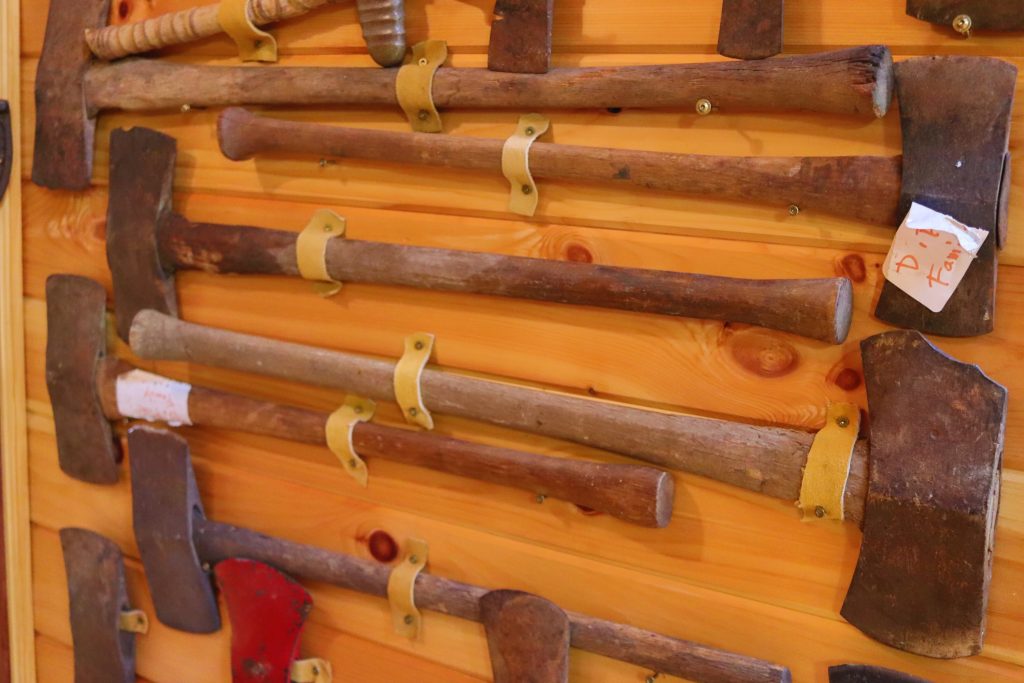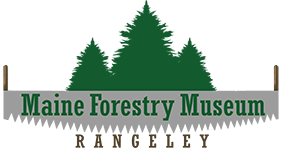
Ever hear of The Rockaway? The Dirigo? How about The Pioneer? The Forest King? The Diamond? The Maine Wedge? Or Even The Lumberman’s Pride?
No, they are not ATV names!
These brands are names of various axe patterns that were manufactured right here in Maine from the late 1800’s through the mid 1900’s. Maine, The Pine Tree State, had a robust logging industry. And the best way to meet the supply chain demand of tools for Maine loggers was to manufacture axes locally.
West Waterville, Maine was the hotbed of axe manufacturing. The “free” waterpower of the Messalonskee Stream attracted axe manufacturers to the area now known as Oakland, Maine. One prominent manufacturer, The Dunn Edge Tool Company, produced 120,000 axes in a single year. In nearby Waterville, The Androscoggin and Kennebec Railroad Line provided the distribution channel of West Waterville manufactured axes to the rest of United States.
The American version of the axe differed from the original design the first settlers used. The European design called the “trade axe” since it was used in multiple trades such as felling small trees, splitting wood, and butchering animals. Yet, the trade axe was not effective for felling large trees. Thus, the quest for a more effective axe for harvesting forests throughout the northeast began.
Loggers and blacksmiths started modifying the axe head to create a more productive tool. Dense forests required diverse types of axes for efficient tree felling. During the 1800’s, more than three hundred axe designs were being manufactured to fulfill the demand of American loggers. The “American Axe” design included a thicker axe head and shorter handle compared to its predecessor the trade axe.
Additionally, let us not forget the popularity of the double bitted axe. The double bitted axe, comprised of two
cutting edges on a single axe head, allowed increased productivity of harvesting larger forests. Some loggers had both blades equally sharp for cutting trees. Other loggers had one single sharp edge for felling trees and a dull edge for limbing branches or cutting roots. The double bitted axe was not an innovative design unique to America, but it greatly enhanced the productivity of the dedicated logger.
The popularity of the American Axe began to diminish due to advancement in tool technology. The emergence of the crosscut saw in the late 1800’s and the introduction of the chainsaw in the mid-1900’s led to the demise of the handheld axe. Both saws help to improve productivity of felling larger trees in its era.
Are there any other types of axes used for special applications? Absolutely! The hewing axe helped to flatten round logs into square logs for framing buildings, barns, and railroad ties. Smaller sized axes, or hatchets, were designed for splitting wood, shingling, and carpentry work. Ice axes, turf axes, fire axes, and butchering axes all have unique characteristics to address a specific application. Let’s not forget that axes have been used as a weapon for centuries…Just ask Lizzie Borden….
Is it still possible to purchase an American made axe in Maine? Yes, indeed! No doubt you may find one
in a yard sale. However, you may want to check out Brant & Cochran Axes, Snow & Nealley Inc., and the Peavey Manufacturing Company.
Interested in watching an informative video concerning axes? Check this out; An Ax to Grind – Complete Video – YouTube
Finally, how about a little ax humor? Have a favorite ax saying? How about these?
Got an axe to grind?
Don’t be a pain in the axe?
Let’s bury the hatchet!
The only certainty in life is death and axes…
Sources: The Ax Book: The Lore and Science of the Woodcutter by Dudley Cook, A Primer on The Axe by Brett McKay, Patten Lumbermen’s Musuem, Woodsmanship by Bernars S. Mason, An Ax to Grind by Bernie Weisgerber, Portland Press Herald “Maine Used to Be the Ax Making Capital of the World”
